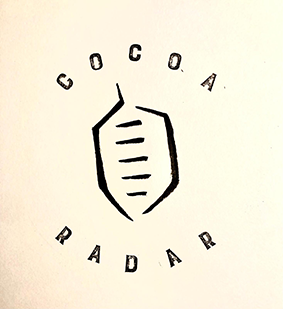On creating ISM Ingredients, Koelnmesse (organisers of ISM/ProSweets Cologne) states that it is introducing a new specialised trade fair format to the market as of February 2026, focusing specifically on raw materials, functional ingredients, and semi-finished products for the sweets and snacks industry.
The new platform is a response to the increasing importance of ingredients as innovation drivers, particularly in light of rising raw material prices, disrupted supply chains, and growing demands for sustainability.
"The strong response shows that there is a concrete need for a focused and future-oriented Ingredients platform with international reach among the producers of sweets and snacks," Guido Hentschke, Director ProSweets Cologne & ISM Ingredients, told CocoaRadar.
"Especially the combination between functional, natural and technologically relevant ingredients opens up new perspectives for innovation, added value and consumer relevance."
CocoaRadar Industry Report
June 2025
Executive Summary
The confectionery sector is undergoing a dynamic transformation, with food ingredients at the heart of innovation. Amid changing consumer preferences, supply chain volatility, and rising sustainability expectations, the role of ingredients has expanded beyond flavour and function—they are now central to product differentiation, health positioning, and regulatory compliance.
From cocoa-free chocolate to upcycled sweeteners and botanical infusions, ingredient innovation is reshaping the competitive landscape.
4 Key Innovation Drivers
1. Consumer Demand for Clean Label and Functional Benefits
- Natural and recognisable ingredients are now a top priority for consumers seeking transparency and authenticity.
- Ingredients with functional health claims, such as adaptogens, prebiotics, and protein fortifiers, are gaining traction in the better-for-you confectionery space.
- The clean-label movement is influencing reformulation efforts, especially in reducing sugar, allergens, and artificial additives.
2. Sustainability and Ethical Sourcing
- Cocoa alternatives (e.g., precision-fermented chocolate, carob, and jackfruit seed) are gaining ground due to environmental and ethical concerns.
- Upcycled ingredients (e.g., cocoa pulp juice, fruit fibres, spent grains) are being incorporated to reduce food waste and improve sustainability credentials.
- Certifications (Rainforest Alliance, Fairtrade, etc.) and carbon labelling are becoming standard expectations in premium markets.
3. Technology-Enabled Ingredient Innovation
- AI and biotechnology are facilitating precision formulation and predictive flavour development.
- Novel ingredient platforms—such as cell-cultured fats and fermented dairy replacements—enable plant-based confections that mimic traditional texture and taste.
- Encapsulation technologies are improving the stability and delivery of flavours, probiotics, and bioactives.
- Dubai Chocolate Signature Ingredients
- Milk chocolate shell: Typically Belgian-made, though some versions use Swiss.
- Kataifi (shredded phyllo/kadaifi pastry): Toasted until crispy, providing a golden knafeh-like crunch.
- Pistachio paste or butter: Often blended with tahini for creaminess; premium bars contain up to ~22 % pistachio.
- Tahini (sesame paste): Adds depth and nutty complexity, though optional in copycat recipes.
Notable Ingredient Innovations by Category
What does it all mean?
Food ingredients are no longer just building blocks—they are brand builders. In the confectionery sector, they offer a path to meet evolving consumer values, mitigate supply risks, and unlock new market segments. Innovation lies not just in the final product, but increasingly in what it’s made from.
Industry initiatives
Through SnackFutures, Mondelēz International has invested in startups creating ingredients from mushrooms, algae, and precision fermentation, supporting its ambition for “disruptive wellness snacking.”
Nestlé has also launched confections with a proprietary fibre-based sugar reduction system that retains mouthfeel. This aligns with their global health strategy while maintaining indulgence.

Tony’s Chocolonely says its upcycled ingredients solutions have met with positive consumer response due to enhanced sustainability messaging, including its piloted cocoa pulp-based fillings to support zero-waste cocoa processing and exotic flavour profiles.
Market & R&D Outlook
- Ingredient innovation pipelines are increasingly driven by startup ecosystems, academia–industry partnerships, and open-innovation platforms.
- Regions like Europe and North America lead in regulatory-compliant, clean-label ingredients, while Asia-Pacific sees high growth in botanical and nutraceutical confections.
- 2025–2027 Forecast: Ingredient-led NPD (new product development) in confectionery is expected to grow at a CAGR of 6–8%, led by health- and sustainability-driven formulations.

ISM Ingredients
The target group of ISM Ingredients comprises producers of sweets and snacks, including procurement decision-makers, product developers, innovation departments, manufacturers, trademark developers, and trade visitors from the food service sector.
The trade fair focuses on themes such as health and functionality, fermentation, sensory innovations, clean-label products, upcycling, and natural ingredients.
The Special Show Ingredients form a special highlight. Throughout the show, innovative start-ups will present their solutions and engage in discussions with industry professionals and investors.
ISM Ingredients is being co-located with ISM and ProSweets Cologne from 1-4 February 2026.
- From the Desk of CocoaRadar is the official media partner ECA 9th European Cocoa Forum.
- 'From Our Desk. To Yours. Daily.'
- Sign-up here for free and upgrade to an annual plan.

